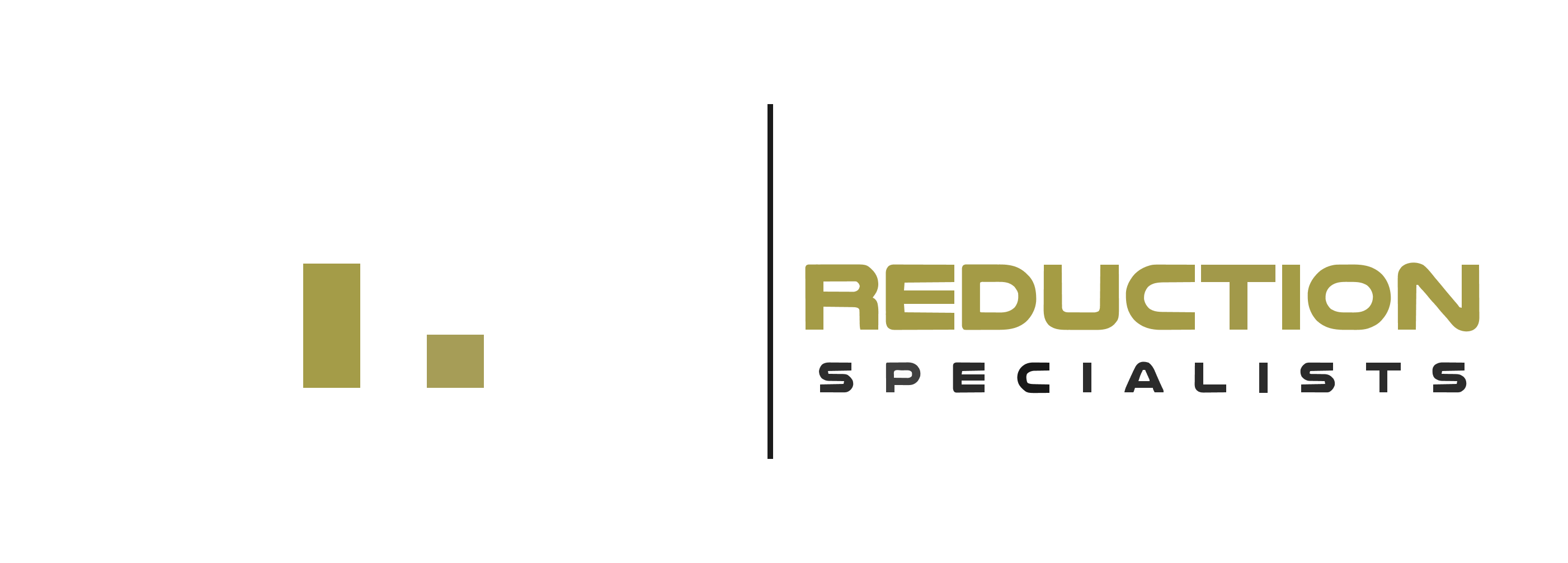Smart Tax Planning Guide: 7 Ways to Maximize Your Year-End Deductions Now
Worried about paying more taxes than necessary this year? You’re not alone. With tax season approaching, now is the crucial time to implement smart strategies that can significantly reduce your tax burden. The best way to maximize your year-end tax deductions is to start planning now, before December 31st. Whether you’re a business owner, employee, or investor, understanding and implementing effective tax-saving strategies can keep thousands of dollars in your pocket. In this comprehensive guide, we’ll walk you through 7 powerful yet often overlooked tax planning strategies that can help you optimize your deductions. From timing your income and expenses to making the most of retirement contributions and charitable giving, we’ve got you covered with actionable steps you can take today. Let’s dive into these proven tax-saving techniques that successful taxpayers use to legally minimize their tax liability.
Key Takeaways:
- – Time your income and expenses strategically to minimize your tax liability for the current year while considering your tax bracket position.
- – Maximize contributions to tax-deferred retirement accounts, including traditional IRAs and employer-sponsored retirement plans, to reduce your taxable income.
- – Implement tax-loss harvesting strategies by selling investments at a loss to offset capital gains and potentially reduce your tax burden.
- – Consider making qualified charitable distributions and bunching charitable contributions to optimize your deductions, especially if you’re close to the standard deduction threshold.
- – Review your investment portfolio and consider Roth IRA conversions to manage future tax implications and required minimum distributions.
- – Consult with a tax advisor to ensure your tax planning strategies align with current tax laws and your specific financial situation.
Understanding Your Current Tax Position
Before diving into tax-saving strategies, it’s crucial to get a clear picture of where you stand financially. Let’s break down how to assess your current tax position effectively.
Review Your Income Sources
Take a close look at all your income streams from the past year. This includes your salary, freelance work, investments, rental properties, and any other sources. Having this information readily available helps you make informed decisions about potential deductions and credits.
Analyze Your Tax Bracket
Understanding which tax bracket you fall into is essential for smart planning. Your tax bracket can significantly impact your strategy, especially when deciding whether to defer income or accelerate deductions before year-end.
Gather Important Documents
Collect all relevant tax documents, including:
– W-2 forms from employers
– 1099 forms for contract work
– Investment statements
– Mortgage interest statements
– Charitable donation receipts
– Medical expense records
Calculate Year-to-Date Tax Payments
Add up all the tax payments you’ve made throughout the year, including:
– Withholdings from your paycheck
– Quarterly estimated tax payments
– Any additional tax payments
Identify Life Changes
Consider major life events that occurred this year:
– Marriage or divorce
– Birth of a child
– Home purchase or sale
– Job change or retirement
– Starting a business
These changes can significantly impact your tax situation and available deductions.
???? Key Takeaway: A thorough assessment of your current tax position, including income sources, tax bracket, and life changes, creates the foundation for effective year-end tax planning and maximizing deductions.
Strategic Income Deferral Techniques
Understanding Income Deferral
Income deferral is a powerful tax planning strategy that involves postponing income recognition to a future tax year. This approach can be particularly beneficial if you anticipate being in a lower tax bracket in the following year. By strategically timing when you receive certain types of income, you can potentially reduce your overall tax burden.
For instance, if you’re self-employed or a business owner, you have more flexibility in controlling when you receive payments. You can send invoices later in December, ensuring the payments arrive in January of the next year. This effectively shifts that income to the following tax year.
Smart Timing of Year-End Bonuses
When it comes to year-end bonuses, timing is everything. If your employer offers flexibility in bonus payment dates, consider requesting to receive your bonus in January instead of December. This simple adjustment can help reduce your current year’s taxable income.
For example, if you’re expecting a $10,000 bonus and are currently in the 24% tax bracket, deferring this income could save you $2,400 in immediate taxes. However, it’s crucial to evaluate your expected tax situation for both years before making this decision.
Remember to consider factors like:
– Your projected income for next year
– Any anticipated changes in tax rates
– Potential changes in your employment status
– Expected deductions and credits for both years
The key is to maintain open communication with your employer about bonus payment timing while ensuring all arrangements comply with tax regulations and company policies.
???? Key Takeaway: Strategic income deferral through delayed invoicing and bonus timing can significantly reduce your current tax burden, but success depends on careful evaluation of your tax situation across both years.
Optimizing Retirement Account Contributions
Maximizing your retirement account contributions before year-end can significantly reduce your taxable income while securing your financial future. Let’s explore the most effective strategies to optimize your retirement savings.
Traditional IRA and 401(k) Contributions
Contributing to traditional retirement accounts reduces your taxable income dollar-for-dollar. For 2024, you can contribute up to $23,000 to your 401(k), with an additional $7,500 catch-up contribution if you’re 50 or older. Traditional IRA contributions are capped at $7,000, with a $1,000 catch-up allowance.
Roth Account Strategies
While Roth contributions don’t offer immediate tax deductions, they provide tax-free growth and withdrawals in retirement. Consider converting traditional IRA funds to a Roth IRA if you expect to be in a higher tax bracket during retirement. This strategy, known as a Roth conversion, can be particularly beneficial in years when your income is lower.
Self-Employed Retirement Options
If you’re self-employed, explore SEP IRA or Solo 401(k) options. These accounts allow for higher contribution limits – up to 25% of your net self-employment income or $69,000 for 2024, whichever is less. Making these contributions before year-end can substantially reduce your tax liability.
Required Minimum Distributions (RMDs)
Don’t forget about RMDs if you’re 73 or older. Failing to take your RMD by December 31st can result in a hefty 25% penalty on the amount not withdrawn. Consider using qualified charitable distributions (QCDs) to satisfy your RMD while supporting charitable causes tax-efficiently.
???? Key Takeaway: Maximize your retirement account contributions before year-end to reduce current tax liability, taking advantage of increased contribution limits and catch-up provisions while ensuring RMD compliance if applicable.
Investment Portfolio Tax Management
Tax-efficient investment management plays a crucial role in maximizing your year-end returns. Let’s explore some strategic approaches to optimize your investment portfolio for tax purposes.
Tax-Loss Harvesting Opportunities
Tax-loss harvesting is a powerful strategy to offset capital gains by selling investments at a loss. By strategically selling underperforming assets, you can reduce your taxable income while maintaining your overall investment strategy. Remember to avoid wash sales by waiting 30 days before repurchasing substantially identical securities.
Strategic Timing of Investment Sales
Consider the timing of your investment sales carefully. Long-term capital gains (assets held for more than a year) are typically taxed at lower rates than short-term gains. If possible, hold onto appreciated assets until they qualify for long-term capital gains treatment.
Investment Account Optimization
Distribute your investments strategically across different types of accounts. Hold tax-efficient investments like growth stocks and municipal bonds in taxable accounts, while keeping high-yield bonds and dividend-paying stocks in tax-advantaged accounts like IRAs.
Mutual Fund Distribution Management
Be mindful of mutual fund distributions, especially towards year-end. Consider delaying new mutual fund investments until after distribution dates to avoid unnecessary tax liability on gains you didn’t participate in earning.
Tax-Efficient Rebalancing
When rebalancing your portfolio, focus on tax-efficient methods. Consider using new contributions to underweight assets rather than selling overweight positions. You can also direct dividend and interest payments to underweight areas of your portfolio.
Investment Vehicle Selection
Choose tax-efficient investment vehicles when possible. Exchange-traded funds (ETFs) typically generate fewer capital gains distributions than actively managed mutual funds. Consider municipal bonds for tax-free income if you’re in a higher tax bracket.
???? Key Takeaway: Strategic investment portfolio management through tax-loss harvesting, timing of sales, and proper account allocation can significantly reduce your tax burden while maintaining investment goals.
Charitable Giving Strategies
Maximize your tax benefits while making a positive impact through strategic charitable giving. By planning your donations wisely, you can support causes you care about while optimizing your tax deductions.
Timing Your Donations
Consider bunching multiple years of charitable contributions into a single tax year. This strategy helps you exceed the standard deduction threshold, making itemizing more beneficial. For instance, if you typically donate $10,000 annually, you could combine two years’ worth of donations ($20,000) into one tax year.
Donor-Advised Funds
A donor-advised fund (DAF) offers flexibility in timing your charitable deductions. You can contribute assets now for an immediate tax deduction while distributing the funds to charities over time. This approach works particularly well with appreciated securities, allowing you to avoid capital gains taxes.
Direct IRA Transfers
If you’re 70½ or older, consider making qualified charitable distributions (QCDs) directly from your IRA. You can transfer up to $100,000 annually to qualified charities, which counts toward your required minimum distribution without increasing your adjusted gross income.
Documentation Requirements
Keep detailed records of your charitable contributions. For cash donations of $250 or more, obtain written acknowledgment from the charity. For non-cash donations exceeding $5,000, secure a qualified appraisal to substantiate your deduction.
Strategic Asset Selection
Choose the right assets for charitable giving. Donating long-term appreciated securities provides a double tax benefit – you avoid capital gains tax and receive a deduction for the full fair market value. This strategy is more tax-efficient than selling the assets and donating cash.
???? Key Takeaway: Strategic charitable giving through methods like bunching donations, using donor-advised funds, and making direct IRA transfers can significantly boost your tax benefits while supporting meaningful causes.
Required Minimum Distribution Planning
Understanding your Required Minimum Distributions (RMDs) is crucial for effective tax planning. As retirement account holders reach age 73, they must start taking these mandatory withdrawals to avoid hefty penalties.
Calculating Your RMDs
The IRS determines your RMD amount based on your account balance and life expectancy. For most retirement accounts, you’ll need to withdraw funds by December 31st each year. However, if this is your first RMD, you have until April 1st of the following year to take it.
Penalty Avoidance Strategies
Missing an RMD can result in a 25% penalty on the amount not withdrawn. To prevent this, consider setting up automatic withdrawals or working with your financial advisor to schedule distributions throughout the year.
Tax-Efficient Distribution Methods
Consider spreading your RMDs across multiple withdrawals during the year instead of taking one lump sum. This approach can help manage your tax bracket and potentially reduce your overall tax burden.
Charitable Giving Options
If you don’t need the RMD for living expenses, consider using Qualified Charitable Distributions (QCDs). You can donate up to $100,000 directly from your IRA to qualified charities, satisfying your RMD while excluding the amount from your taxable income.
???? Key Takeaway: Proper RMD planning helps avoid penalties and optimize tax efficiency through strategic withdrawal timing and charitable giving options, ensuring compliance while minimizing tax impact on your retirement income.
Alternative Minimum Tax Considerations
Understanding the Alternative Minimum Tax (AMT) is crucial for effective tax planning. This parallel tax system ensures high-income earners pay their fair share of taxes, even if they qualify for numerous deductions under the regular tax system.
How AMT Works
The AMT calculation starts with your regular taxable income and adds back certain tax preferences and adjustments. These might include state and local tax deductions, private activity bond interest, and certain itemized deductions. The resulting amount is then taxed at either 26% or 28%, depending on your income level.
Common AMT Triggers
Several factors can trigger AMT liability. Large state and local tax deductions, exercising incentive stock options, or claiming significant miscellaneous itemized deductions are common triggers. High-income earners in states with high tax rates are particularly susceptible to AMT exposure.
Planning Strategies
Smart timing of income and deductions can help minimize AMT impact. Consider spreading out large deductions over multiple years rather than claiming them all at once. For instance, if you’re planning charitable contributions, strategically timing them between tax years might help avoid AMT exposure.
State Tax Implications
State taxes play a significant role in AMT calculations. The $10,000 cap on state and local tax deductions under regular tax rules doesn’t apply for AMT purposes. This means high-income earners in states with significant tax burdens need to carefully plan their deductions to avoid triggering AMT.
???? Key Takeaway: Understanding AMT triggers and planning strategies helps optimize your tax position – consider spreading deductions across tax years and carefully timing income recognition to minimize AMT exposure while maximizing tax benefits.
Conclusion
As we wrap up this guide to smart tax planning, remember that taking action before December 31st is crucial for maximizing your year-end deductions. By implementing these seven strategic approaches – from optimizing retirement contributions to strategic charitable giving and tax-loss harvesting – you can significantly reduce your tax liability while strengthening your financial health. Don’t wait until tax time to start planning; the most successful taxpayers make tax-efficient decisions throughout the year. Whether you’re considering a year-end bonus, planning charitable contributions, or managing your retirement accounts, each decision you make today can impact your tax burden tomorrow. Remember to consult with a qualified tax advisor to ensure these strategies align with your specific financial situation. By taking proactive steps now, you can enter the new tax year with confidence, knowing you’ve optimized your deductions and kept more money where it belongs – in your pocket. Start implementing these tax-saving techniques today to secure a more financially sound tomorrow.
FAQs
What happens if I miss the December 31st deadline for tax-deductible contributions?
Any contributions made after December 31st will count towards the next tax year’s deductions, even if you haven’t filed your current year’s return yet. However, traditional IRA contributions can be made until the tax filing deadline (usually April 15th) for the previous year.
Can I claim tax deductions for both charitable donations and retirement contributions in the same year?
Yes, you can maximize deductions by combining charitable donations and retirement contributions in the same tax year. These are separate deductions that don’t affect each other, allowing you to reduce your tax liability through multiple strategies simultaneously.
How do state tax deductions differ from federal tax deductions?
State tax deductions often vary significantly from federal ones, with each state having its own rules and limitations. Some states follow federal guidelines, while others have unique deductions. It’s important to consider both when planning your year-end tax strategy.
What are the tax implications of receiving a year-end bonus?
Year-end bonuses are typically taxed as supplemental wages, often at a flat rate of 22% for federal withholding. However, this could push you into a higher income tax bracket for the year, making it crucial to plan accordingly with retirement contributions or charitable giving.
How long should I keep records of my tax deductions?
The IRS recommends keeping tax records for at least three years from the date you filed your return or two years from the date you paid the tax, whichever is later. For certain items like property transactions, keep records for seven years.
Is it better to take the standard deduction or itemize for year-end tax planning?
The decision depends on whether your itemized deductions exceed the standard deduction amount. For 2023, if your qualified expenses (including charitable contributions, mortgage interest, and state taxes) surpass $13,850 (single) or $27,700 (married), itemizing might be more beneficial.







